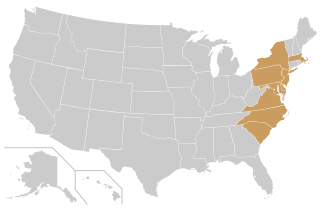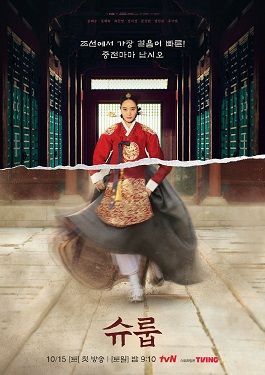Related Research Articles

From 1910 to 1945, Korea was ruled as a part of the Empire of Japan under the name Chōsen (朝鮮), the Japanese reading of Joseon.

The March 1st Movement, also known as the Sam-il (3-1) Movement, was a significant protest movement in early 1919 by Korean people that called for independence from Imperial Japan and a stop to the forced assimilation into Japanese culture. It is also sometimes referred to as the Man-se Demonstrations. It is remembered as one of the earliest and largest protest movements for Korean independence, and remembered as a catalyst for future independence activities. Thirty-three Korean cultural and religious leaders issued a proclamation, supported by thousands of students and civilians in Seoul. There were over 1,000 demonstrations in many other cities. These were brutally suppressed, with Korean historian Park Eun-sik reporting about 7,500 killed and 16,000 wounded, and 46,000 arrested.
Sangokujin is a Japanese term referring to the various former colonial subjects of the Empire of Japan in the aftermath of World War II. This term particularly applied to Koreans and Taiwanese people, although it also sometimes was used for Ryukyuan people. The term is now generally considered antiquated and offensive.

The term "Cinema of Korea" encompasses the motion picture industries of North and South Korea. As with all aspects of Korean life during the past century, the film industry has often been at the mercy of political events, from the late Joseon dynasty to the Korean War to domestic governmental interference. While both countries have relatively robust film industries today, only South Korean films have achieved wide international acclaim. North Korean films tend to portray their communist or revolutionary themes.

The Coastal Athletic Association (CAA), formerly the Colonial Athletic Association, is a collegiate athletic conference affiliated with the NCAA's Division I whose full members are located in East Coast states, from Massachusetts to South Carolina. Most of its members are public universities, and the conference is headquartered in Richmond. The CAA was historically a Southern conference until the addition of four schools in the Northeastern United States after the turn of the 21st century, which added geographic balance to the conference.

The Anglican Church of Korea is the province of the Anglican Communion in North and South Korea. Founded in 1889, it has over 120 parish and mission churches with a total membership of roughly 65,000 people.

The United States Army Military Government in Korea (USAMGIK) was the official ruling body of the Southern half of the Korean Peninsula from 8 September 1945 to 15 August 1948.

The black-tailed gull is a gull native to shorelines of East Asia.

The Cornell University Press is the university press of Cornell University; currently housed in Sage House, the former residence of Henry William Sage. It was first established in 1869, making it the first university publishing enterprise in the United States, but was inactive from 1884 to 1930.

In Hispanic America, criollo is a term used originally to describe people of full Spanish descent born in the viceroyalties. In different Latin American countries, the word has come to have different meanings, mostly referring to the local-born majority.

Anti-Japanese sentiment in Korean society has its roots in historic, cultural, and nationalistic sentiments.

Black God is a Japanese-Korean manga series written by Dall-Young Lim and illustrated by Park Sung-woo. Square Enix published the manga in Japan's bi-monthly seinen magazine Young Gangan. The story is initially set in modern-day Tokyo, then changes to the island of Okinawa in the middle of the story. The word "Black" in the title refers to the character Kuro (黒), as it means black in Japanese. "God" in the title refers to the fact that Kuro is a superhuman, or "Tera Guardian". In France and other French-speaking countries and territories, the manga goes under the name Kurokami: Black God.

The Ministry of Colonial Affairs was a cabinet-level government ministry of the Empire of Japan from 1929 to 1942.

Anarchism in Korea dates back to the Korean independence movement in Korea under Japanese rule (1910-1945). Korean anarchists federated across their end of the continent, including forming groups on the Japanese mainland and in Manchuria, but their efforts were perforated by regional and world wars.

Architectural revivalism is the use of elements that echo the style of a previous architectural era that have or had fallen into disuse or abeyance between their heyday and period of revival. Revivalism, in a narrower sense, refers to the period of- and movement within- Western architectural history during which a succession of antecedent and remenescent styles were taken to by architects, roughly from the late 18th century, and which was itself succeeded by Modernism. Notable revival styles include Neoclassical architecture, and Gothic Revival. Revivalism is related to historicism.
Africana philosophy is the work of philosophers of African descent and others whose work deals with the subject matter of the African diaspora. The name does not refer to a particular philosophy, philosophical system, method, or tradition. Rather, Africana philosophy is a third-order, metaphilosophical, umbrella-concept used to bring organizing oversight to various efforts of philosophizing. Africana philosophy is a part of and developed within the field of Africana studies.

The territorial conquests of the Empire of Japan in the Western Pacific Ocean and East Asia began in 1895 with its victory over Qing China in the First Sino-Japanese War. Subsequent victories over the Russian Empire and German Empire expanded Japanese rule to Taiwan, Korea, Micronesia, southern Sakhalin, several concessions in China, and the South Manchuria Railway. In 1931, Japan invaded Manchuria, resulting in the establishment of the puppet state of Manchukuo the following year; thereafter, Japan adopted a policy of founding and supporting puppet states in conquered regions. These conquered territories became the basis for the Greater East Asia Co-Prosperity Sphere in 1940.
Anarchism in Hong Kong emerged as part of the Chinese anarchist movement, when many anarchists sought refuge from the Qing Empire in the territory. It grew alongside the Chinese revolutionary movement, before the territory again became a safe haven for anarchists, following the Communist victory in the Chinese Civil War. Since then anarchists have formed a part of the Hong Kong opposition movement, first to British colonial rule and then to the rising authoritarianism of the Government of Hong Kong.
Anarchism in Taiwan first developed out of the anti-imperialist resistance to the Empire of Japan, when a number of young Taiwanese nationalists were exposed to anarchism during their studies abroad. Influenced by the anarchist movements in China and Japan, and in close cooperation with a number of Korean anarchists, the Taiwanese anarchist movement reached its height during the 1920s, before being suppressed by 1931.

Under the Queen's Umbrella is a 2022 South Korean television series starring Kim Hye-soo, Kim Hae-sook, and Choi Won-young. It aired on tvN from October 15 to December 4, 2022, every Saturday and Sunday at 21:10 (KST). It is also available for streaming on Netflix in selected regions.
References
- ↑ Dunwalke, Erez Manela (2007). The Wilsonian Moment: Self-Determination And The International Origins. Oxford University Press. ISBN 9780198039150.
- ↑ Pye, Lucian W. (January–February 2002). "Under The Black Umbrella: Voices From Colonial Korea". Foreign Affairs. Retrieved 4 June 2013.